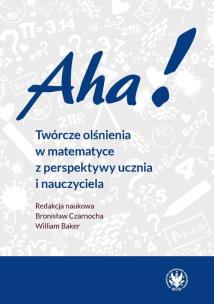- Regulamin
- Koszty dostawy
- Kontakt
- Dziś w ofercie 237 025 produktów
- Albumy
- Beletrystyka
- Biografie
- Dla dzieci i młodzieży
- Edukacja
- Ekonomia i biznes
- Ezoteryka
- Historia
- Informatyka
- Kalendarze
- Komiksy
- Kryminał i sensacja
- Kultura i sztuka
- Literatura faktu
- Literatura kobieca
- Literatura piękna
- Medycyna
- Nauka języków obcych
- Nauki humanistyczne
- Nauki przyrodnicze
- Nauki ścisłe
- Podręczniki
- Poradniki
- Prawo i administracja
- Przewodniki i podróże
- Psychologia
- Religia
- Sport
- Technika
- Zdrowie i uroda
- Artykuły dla niemowląt
- Bączki
- Bujaki i skoczki
- Ciągnij / pchaj
- Dla niemowlaka
- Grzechotki i gryzaki
- Karuzele i pozytywki
- Maty i centra zabaw
- Projektory i lampki
- Sortery i piramidki
- Zabawki
- Edukacyjne i kreatywne
- Figurki
- Klocki
- Lalki
- Pojazdy
- Pluszaki i maskotki
- Sport i rekreacja
- Zabawa w dom
- Zabawki drewniane
- Puzzle
- Do 200 elementów
- 201-500 elementów
- 501-1000 elementów
- Ponad 1000 elementów
- Puzzle 3D
- Artykuły biurowe
- Artykuły piśmiennicze
- Bloczki i kartki samoprzylepne
- Dziurkacze
- Kalkulatory
- Nożyczki i nożyki
- Skoroszyty
- Teczki
- Wizytowniki
- Zszywacze
- Artykuły szkolne
- Akcesoria szkolne
- Modelowanie
- Notatniki i zeszyty
- Piórniki
- Plecaki i torby
- Pojemniki na śniadanie
- Pomoce naukowe
- Przybory matematyczne
- Przybory rysunkowe
- Upominki i gadżety
- Akcesoria do książek
- Artykuły balowe
- Breloki i zawieszki
- Drobiazgi, różności
- Kubki
- Oferta Świąteczna
- Papeteria, kartki i naklejki
- Skarpetki Many Mornings
- Upominki
- Audiobooki
- Beletrystyka
- Biografie i wspomnienia
- Dla dzieci i młodzieży
- Fantastyka
- Filozofia i religia
- Historia
- Literatura faktu i reportaż
- Poradniki
- Sensacja i kryminał
- Filmy DVD/BD
- Animowane
- Biograficzne
- Fantasy
- Horrory
- Komedie
- Romanse
- Science Fiction
- Sensacyjne / kino akcji
- Thrillery
- Muzyka CD
- Alternatywna
- Blues
- Dla dzieci
- Jazz
- Klasyczna
- Piosenka aktorska i poetycka
- Pop
- Rock
- Świąteczna i kolędy
- Akcesoria GSM
- Głośniki
- Kable i adaptery
- Klawiatury
- Myszy
- Słuchawki

Aha! Twórcze olśnienia w matematyce z perspektywy ucznia i nauczyciela
Autor: Bronisław Czarnocha William Baker
Opis produktu
Zasady bezpieczeństwa
Autorzy publikacji odpowiadają na pytania o to, co ma wspólnego matematyka z kreatywnością i czy nauczanie i uczenie się matematyki może być twórcze. Ich zdaniem lekcje matematyki są doskonałą okazją do kształtowania i badania kreatywności, a twórcze momenty aha! wspomagają proces uczenia się i rozwój poznawczy wszystkich uczniów, nie tylko tych najzdolniejszych. Książka wprowadza do nauczania matematyki sformułowaną przez Koestlera teorię bisocjacji kreatywności momentu aha! Autorzy łączą ją z konstruktywistycznymi koncepcjami uczenia się, tworząc podstawy nowej teorii, która integruje kreatywność z uczeniem się i pozwala opisać momenty wglądu na różnych etapach rozwoju ucznia. Zebrane w tej publikacji teksty rzucają światło na kreatywne doświadczenie eureka w matematyce, które omawiane jest w rozmaitych kontekstach: afektu, procesów poznawczych, teorii uwagi oraz neuronauki i kreatywności komputerowej.
Pozycja adresowana jest do wszystkich zainteresowanych kreatywnością w nauce, nauczycieli matematyki i przedmiotów ścisłych, badaczy ludzkiej kreatywności i specjalistów od kreatywności komputerowej, a także rodziców, którzy chcą pielęgnować twórczą postawę u swoich dzieci.
******
Creativity of an Aha! Moment and Mathematics Education
The authors of the publication answer questions about what mathematics has to do with creativity and whether learning mathematics can be creative. In their opinion, maths lessons are an excellent opportunity to shape and explore creativity, and creative aha! moments support the learning process and cognitive development of all students, not only the most talented ones. The book introduces the theory of bisociation the creativity of an aha! moment, formulated by Koestler, into the teaching of mathematics. The authors combine it with constructivist concepts of learning, forming the basis of a new theory, which integrates creativity and allows to describe moments of insight at different stages of student development. The texts collected in the publication shed light on the creative experience of eureka in mathematics, which is discussed in various contexts: affection, cognitive processes, attention theory, neuroscience and computational creativity.
Keywords: aha! moment, Koestlers bisociation theory, constructivist learning concepts, maths didactics, creativity research.


